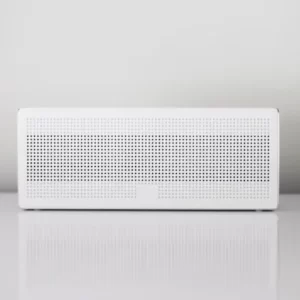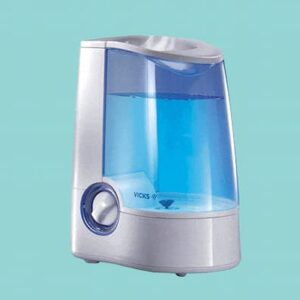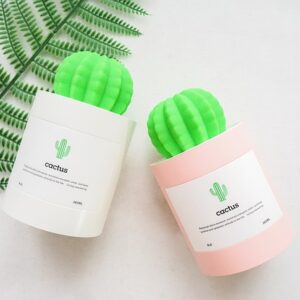If you live in a humid climate, having a dehumidifier on hand can be very helpful. The quality of life is negatively impacted by the large number of bacteria found in humid air. The air can be made fresh and clean by removing the water vapors with a dehumidifier.
The tank gathers a significant amount of water from the air during the dehumidification process. If you can make use of the water somehow, that would be fantastic.
But, can you drink water from a dehumidifier? No! Dehumidifier water is not suitable for drinking. You’d be interested in the specifics.
Please keep reading for more information.
Table of Contents
Is It Safe To Drink Dehumidifier Water?
It’s not as simple as you might think to provide an answer to this.
The water condensate produced during the dehumidifying process is pure water, according to Dr. Joe Schwarcz of McGill University.
Water vapor in the air is drawn out by your dehumidifier and cooled into liquid water as it exits. These water molecules don’t contain any of the airborne impurities, such as bacteria and mold spores. Condensate from steam is used in a process that is comparable to this one to produce distilled water.
As air is pulled into the unit, pathogens such as mold and bacteria make contact with all of the surfaces. These pollutants may wash into the water reservoir with the condensate even though they are not in the water vapor that is condensed. Additionally, the water reservoir itself offers the ideal environment for the growth and multiplication of these pathogens.
Furthermore, unlike food and water collection materials, the plastic and metal surfaces of your dehumidifier are not subject to strict standards of purity. This implies that heavy metal, BPA, and other chemical contamination is very likely.
All of this means that while the initial condensate product your dehumidifier produces is safe to drink, the finished product that enters your reservoir is probably not.
Why Is Dehumidifier Water Not Suitable For Drinking?
According to the Environmental Protection Agency, stagnant condensate creates an ideal environment for the growth of biological pollutants like algae, mildew, and mold. Additionally, the water from a humidifier might contain dehumidifier metal residues and toxins like lead.
Drinking is dangerous because it can put one’s health at risk and contains contaminants. Condensate water is not sterilized by boiling, in contrast to distilled water.
Dehumidifiers use condensation to draw water from the air. They use cold metal tubes in this process to turn moisture into liquid water. A hose can be used to drain the condensate after it has accumulated in the dehumidifier.
The procedure does not involve water sterilisation. Additionally, boiling cannot get rid of some contaminants, such as lead and other metals.
A Dehumidifier’s Mechanism
A dehumidifier works using two principles, refrigeration and absorption.
- Refrigeration stage: During the refrigeration process, a fan is used to move humid air past the cold coils. When water strikes a chilled surface, it condenses, sending clean air back into the space.
A drip chamber on a dehumidifier is used to store condensed water. Despite the fact that the condensation process turns the moisture into liquid water, it is not pure. It has bacteria, mold spores, and other impurities that condensation cannot get rid of. - Absorption stage: Most of the humidity in the air is absorbed by the dehumidifier during the absorption process, resulting in less humidity in the air. Warm air is then released by the electrical fan.
Extra vapors in the atmosphere are drained away when the air passes through the fan. The dehumidifier then disperses clean air into the space.
Dehumidifiers Do Not Purify Water
Though through the two principles, dehumidifiers perform their functions exemplary, they do not clean the water. Hence, in the end, the water collected still has impurities which could lead to a health hazard if you drink the water.
Many people do not understand the difference between the condensation and distillation of water, leading them to believe that because dehumidifiers use the condensation process, the water is safe for consumption. Here is how they differ. See more about Humidifier Vs. Dehumidifier
Is Boiling Dehumidifier Water Safe To Drink?
There is a very high likelihood that the water in your dehumidifier reservoir is contaminated with pathogens unless you keep the cleanest dehumidifier reservoir on hand and somehow sanitize the internal components of your appliance.
Some individuals ponder whether boiling their dehumidifier water would be sufficient to render it drinkable.
While it is true that boiling the water for a full minute (or more at altitude) will kill all the pathogens in it, boiling will do nothing to remove other contaminants like heavy metals and chemicals.
The water could only be sufficiently purified by boiling if the steam was saved. In order to make the water from your dehumidifier drinkable, you would essentially need to distill it.
What Makes Condensation And Distillation Different From One Another?
Water can be made clean through distillation, as opposed to condensation. Through heating, the distillation apparatus brings the water to a boil. As a result, the water evaporates, leaving behind all the pollutants. After that, these water vapors transfer to another container. The vapors are condensed into liquid water by the cold surface area of this container. Water is made pure through distillation, and drinking pure water is safe. Evaporation is the difference between distillation and condensation. The water does not evaporate in a dehumidifier before condensing. In response, a dehumidifier produces unclean, unfit-for-drinking water.
Is The Water From A Dehumidifier Drinkable?
Although the dehumidifier water is not pure, you can definitely treat it to make it drinkable. Many different processes are used to filter water.
- DistillationThe water can be made drinkable by distillation, which removes the water’s microorganisms. You have already looked over the distillation process above.
- Reverse OsmosisAn additional water filtration method is reverse osmosis. It makes use of a membrane or partially permeable surface. When water flows over this surface, all the contaminants and large particles are trapped inside, making the water safe to use. This is basically how a common “water filter” works.
Using the techniques described above, you can clean the dehumidifier’s water. However, it is still not advised to drink from this source.
How To Use Dehumidifier Water?
There are still applications for your dehumidifier water if distilling it seems like too much work for its own good.
Water Your Plants
Plants both indoor and outdoor can be watered with dehumidifier water. Nothing in the water will harm your plants as long as you maintain a reasonably clean reservoir.
Remember that dehumidifier water lacks many of the minerals that spring water and tap water have and that are essential for houseplants to thrive. Use a balanced fertilizer once a month if you only water with dehumidifier water.
Fill Your Toilet Tank
Dehumidifier water is considered “gray water” because it’s not safe to drink but doesn’t contain the dangerous pathogens or odors of black water. Filling your toilet tank with gray water is a fantastic way to use it.
The majority of household toilet tanks have a capacity of 1 to 7 gallons. You can save a significant amount of water and money each month by filling your toilet tank with dehumidifier water.
Clean Your House
You can also clean your house with dehumidifier water when combined with common cleaning products like vinegar, bleach, or ammonia. Use it to fill your spray bottles, mop buckets, and your preferred DIY cleaners to conserve water and money.

Factors To Consider Before Purchasing A Dehumidifier
Not everyone requires a dehumidifier in their room, and not everyone requires a dehumidifier of a specific size. The following things should be taken into account before buying a dehumidifier.
Do I Need A Dehumidifier?
Depending on where you live, you might need a dehumidifier. A dehumidifier is necessary if you live somewhere that is very humid. Additionally, dehumidifiers are required if your space is in a basement to get rid of mold, algae, and a musty odor.
You also urgently need a dehumidifier if you start experiencing persistent allergies after moving into your home. You would benefit greatly from dehumidifiers if you had allergies.
Space Needed To Dehumidify
Dehumidifiers of various sizes operate differently in rooms of various sizes. For instance, you need a large enough device to do the job if the area that needs to reduce humidity is quite large.
In order to achieve the best results, it is crucial to select the right dehumidifier size. If not, the device wouldn’t effectively remove moisture from the environment.
Additionally, removing moisture from the air may require more effort than is necessary, which can be very energy-intensive. Ask for a dehumidifier that is appropriate for your area after measuring the size of your space.
Indoor Temperature & Humidity Level
How a dehumidifier operates depends on the temperature and relative humidity. You should make sure the dehumidifier can operate in your space, for instance, if the temperatures are low. Otherwise, the dehumidifier coils can freeze, interfering with their functioning.
How To Get Rid Of Dehumidifier Water
As previously mentioned, you shouldn’t drink dehumidifier water or give it to dogs or other animals to drink.
You must therefore be aware of the proper use of dehumidifier water due to the scarcity of freshwater. The best course of action would be to use it while upholding strict safety regulations.
In addition, a dehumidifier needs to be emptied in order to continue working whether you are home or not. If you don’t empty the collecting bucket, it will automatically turn off and stop operating when it is full.
You can connect to a larger tank where the water will be draining in order to facilitate frequent emptying of the collecting bucket.
Do Special Features Need To Exist?
Dehumidifiers vary in features, such as ducting features. With the aid of this particular feature, you can simultaneously dehumidify several areas. Additionally, ducting enables you to conceal the dehumidifier in a closet or different room.
Not all dehumidifiers have additional notable features. These include humidistats, digital controls, remote controls, and wheels or handles for simple mobility. A dehumidifier that best suits your needs should be chosen after consulting the manufacturer.
Frequently Asked Questions About Dehumidifiers
Does My Home Need A Dehumidifier?
You definitely need a dehumidifier if you live in a region with high humidity levels. In order to make your home’s air safe to breathe, a dehumidifier will remove any excess moisture.
Additionally, if you live in a basement, you might have noticed mold, algae, or a musty odor. They would disappear after using a dehumidifier. If you live in such an environment, a dehumidifier is necessary.
Can A Dehumidifier Help Prevent Allergies?
Dehumidifiers can do this, in fact. You might have noticed that your family’s allergies have gotten worse since you moved into your new home. If you experience these sensitivities, you might need a dehumidifier if you live in a very humid area.
The air you breathe contains too much water, so you need a dehumidifier to get rid of it. Once you do, your allergies will stop coming back.
Can Dehumidifiers Aid In Reducing The Growth Of Mold?
Yes, dehumidifiers get rid of extra moisture in the air that might encourage the growth of mold. You may notice musty odors in your home as a result of too much water in the air. Hence, using a dehumidifier in your space won’t allow mold growth, and the musty smell will disappear.
Is It Possible To Dry Clothes With A Dehumidifier?
Unquestionably, you can dry your clothes with a dehumidifier. Keep in mind that a dehumidifier’s job is to remove extra moisture from its surroundings. If directed to your clothes, the outward flowing air from the unit can help dry them.
Simply keep the dehumidifier 50 cm away from the clothing. Additionally, ensure that the windows and doors are shut for efficient drying. A dehumidifier can dry clothes more cheaply than an electric dryer.
If I’m Not Home, Will The Water Bucket Overflow?
You can’t let the bucket fill up. Once the collecting bucket is whole, the dehumidifier automatically goes off. But in order to stop the growth of microbes, you must frequently empty the collecting bucket.
For My Dehumidifier, Should I Purchase A Power Surge?
Your dehumidifier would function best if you purchased a power surge. Dehumidifiers typically use a lot of power and risk blowing the circuit breaker. It could blow up if there isn’t a power surge.
Can A Dehumidifier Raise My Room’s Temperature?
Your room’s temperature may slightly rise if you use a dehumidifier. The type of dehumidifier will, however, determine this. A compressor or desiccant dehumidifier, for instance, can significantly raise the temperature in the space. And if you have enough room, the dehumidifier’s effect on the temperature might not be noticeable.
What Does A Dehumidifier Capacity Mean?
The dehumidifier’s capacity is how much moisture it can remove from the air in a day. A 40-pint dehumidifier, for instance, is only capable of removing 40 pints of moisture from the air in a single day.
This does not, however, imply that the dehumidifier’s collection bucket can hold 40 pints. Therefore, you will need to regularly remove the water that has accumulated.
It won’t collect 40 pints of moisture in a day if you don’t empty the bucket because if the bucket is full, it will automatically go off.
Do I Need A Whole House Dehumidifier If I Have A Big Space?
You could have a single large dehumidifier unit for your entire home if the airflow is satisfactory. But you will require a ceiling fan if your home lacks sufficient airflow for the dehumidifier to operate effectively.
Your home’s air would circulate more freely thanks to the fan, which would enable your dehumidifier to do its job as intended. To improve overall performance, you can choose to install smaller dehumidifiers in each room.
Dehumidifiers: Are They Noisy?
Dehumidifiers produce less noise compared to portable air conditioners. Only when it is operating will the device make sound. For this reason, you can decide to place the system far from your bedroom or sound systems.
Conclusion
Condensation occurs in the water from a dehumidifier, but the water is still unsafe to drink. Let us walk you through the essential points in the article:
- Instead of being distilled, dehumidifier water is condensed.
- Evaporation is used in distillation to make water pure and preserve the minerals.
- Condensation and distillation are not the same.
- Water that has been dehumidified can be purified.
- Even filtered water cannot be drunk.
- It can, however, be utilized for a variety of domestic tasks, such as plant irrigation.
In conclusion, you should not waste anything, but you should refrain from drinking dehumidifier water for your safety and health.
Thank you for reading.





